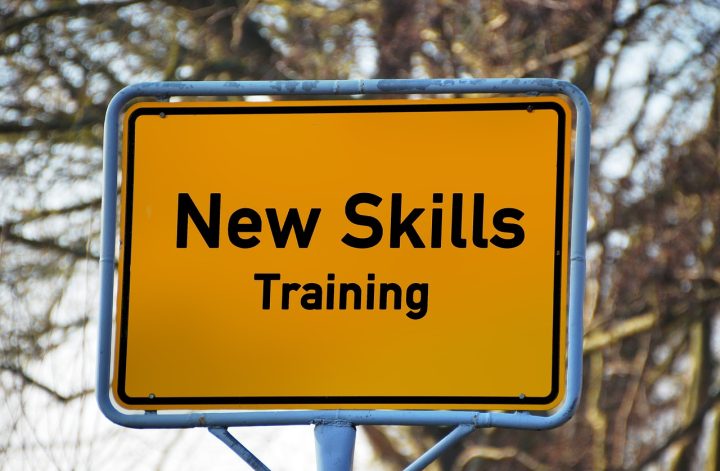High-performing individual contributors often hit a wall in their careers. Despite delivering outstanding technical results, promotions remain elusive. Why? Because leadership is about more than just doing the work — it’s about inspiring, guiding, and influencing others to do their best work too.
If you’re ready to move from being the go-to expert to the go-to leader, you need to master the soft skills that make people want to follow you. Here are the seven people-first soft skills that will fast-track your promotion and practical steps to start building them today.
1. Emotional Intelligence: The Foundation of Modern Leadership
Why it matters: Emotional intelligence (EQ) is the ability to recognize, understand, and manage your own emotions while empathizing with others. Leaders with high EQ build trust, resolve conflicts smoothly, and create psychologically safe environments.
How to develop it:
- Practice self-awareness by journaling daily emotional reactions to situations.
- Ask for feedback on your communication style and emotional presence.
- Use active listening during meetings to truly understand your colleagues’ perspectives.
How to demonstrate it:
- De-escalate tense conversations by naming and validating emotions: “I can see this is frustrating — let’s work through it together.”
- Notice when a team member seems disengaged and check in privately.
Real-world impact: A product manager who diffuses heated debates in cross-functional meetings and helps team members feel heard becomes a natural choice to lead those teams formally
2. Influence Without Authority: Getting Buy-In From Peers
Why it matters: Leadership often starts before you have direct reports. Your ability to align, persuade, and motivate others — without formal power — is a key signal of leadership potential.
How to develop it:
- Learn the goals and motivations of cross-functional partners.
- Practice framing proposals in terms of shared benefits.
- Build credibility by consistently delivering on commitments.
How to demonstrate it:
- Instead of saying, “We should do it my way,” try, “This approach supports both our team’s goal and your career goals — here’s how.”
- Facilitate consensus in meetings where perspectives differ.
Real-world impact: A senior analyst who rallies marketing and engineering around a shared solution, even without a title, shows readiness for a strategic leadership role.
3. Communication: Making Ideas Stick
Why it matters: Leaders must communicate clearly, concisely, and with intent. Whether it’s motivating a team, presenting to executives, or writing an update, effective communication drives alignment and action.
How to develop it:
- Practice writing executive summaries that highlight the “so what.”
- Rehearse explaining complex topics in simple language.
- Solicit feedback on your presentation style.
How to demonstrate it:
- Lead team stand-ups with structured updates that include key outcomes, blockers, and next steps.
- After meetings, send brief recaps that summarize decisions and action items.
Real-world impact: An operations specialist who articulates process changes with clarity and context becomes a trusted voice and a top candidate for leadership roles.
4. Adaptability: Leading Through Change
Why it matters: Change is constant. Leaders who remain calm and constructive during uncertainty set the tone for their teams and are seen as stabilizers.
How to develop it:
- Reflect on past changes: How did you react? What could you do better next time?
- Practice scenario planning: How might you pivot if X happens?
- Stay current on industry shifts and prepare to adjust priorities.
How to demonstrate it:
- Volunteer to lead projects during organizational transitions.
- Encourage your team or peers to view change as an opportunity.
Real-world impact: A tech lead who calmly redirects resources during a surprise pivot shows they’re capable of navigating complexity and leading in ambiguity.
5. Coaching and Mentorship: Lifting Others Up
Why it matters: Leadership is not about doing everything yourself — it’s about empowering others. Mentoring junior colleagues or coaching peers positions you as someone who grows talent, a key trait for promotion.
How to develop it:
- Offer regular feedback sessions with junior colleagues.
- Ask your manager if you can mentor new hires.
- Learn coaching frameworks like GROW to structure conversations.
How to demonstrate it:
- Recognize when a colleague is stuck and guide them to find their own solution.
- Celebrate others’ wins publicly, giving credit generously.
Real-world impact: A designer who consistently helps newer team members level up is often tapped to lead a design pod or team.
6. Strategic Thinking: Seeing the Bigger Picture
Why it matters: Leaders rise above daily tasks to align their work with broader business goals. Strategic thinkers connect the dots, anticipate future challenges, and prioritize for impact.
How to develop it:
- Ask your manager about team or company OKRs (Objectives and Key Results).
- Regularly reflect on how your work ladders up to business outcomes.
- Proactively suggest ideas that align with strategic priorities.
How to demonstrate it:
- In project planning, ask “How does this support our quarterly goals?”
- Propose optimizations that save time, money, or increase customer value.
Real-world impact: A support specialist who notices a pattern in customer tickets and suggests a product improvement can move into a product strategy or leadership role.
7. Accountability: Owning Outcomes and Modeling Integrity
Why it matters: Great leaders take responsibility, even when things go wrong. Owning your work builds trust, sets an example, and shows you’re ready for higher-stakes responsibilities.
How to develop it:
- Use “I” statements instead of blaming others: “I missed that step — here’s how I’ll fix it.”
- Follow through consistently and communicate proactively when you can’t.
- Ask for clarity upfront to avoid misalignment.
How to demonstrate it:
- When a project misses a deadline, take initiative to present a recovery plan.
- Publicly acknowledge mistakes and share lessons learned.
Real-world impact: An engineer who owns a failed deployment and leads the postmortem with transparency often gains respect and future leadership opportunities.
If you want to be seen as a leader, start acting like one today. These seven soft skills don’t require a promotion to begin practicing. In fact, showcasing them consistently is what gets you noticed for promotion.
Commit to developing these skills just as you would any technical competency. Make them visible. Seek feedback. And most importantly, help others rise along the way — because true leadership is not about climbing a ladder alone, but about building a bridge for others to follow.




